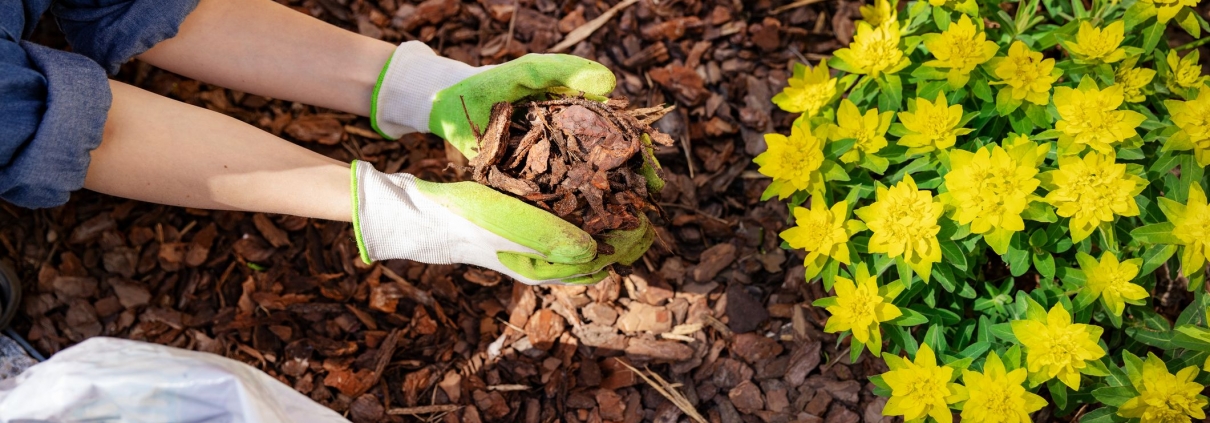The Basics of Applying Mulch
If you are interested in gardening and tree maintenance, chances are you’ve heard about mulch. There are multiple benefits to applying mulch to trees and garden beds including temperature and moisture regulation and weed control. When it comes to choosing the right mulch for your trees, there are multiple types to choose from. Depending on the mulch and application method you choose, your trees will react differently.
Types of mulch
Mulch tends to fall into two categories; organic and inorganic. Organic mulch is made from organic matter which will decay over time. Inorganic mulch tends to be made from rocks, crushed gravel, or granite and does not decay.
Organic
Organic mulch is usually made from leaves, wood chips, compost, and other shredded organic materials. It’s a popular option for trees as it can be made from offcuts and green waste created from the tree itself. Organic mulch also is packed with nutrients that can stimulate growth.
Inorganic
Inorganic mulch can be convenient as it does not need to be replaced, however it lacks the nutrients which organic mulch provides.
Benefits of applying mulch
The common benefits of applying mulch to your trees include:
- Retaining water moisture reduces the need to water (especially important during the hotter months)
- Reducing weeds that can compete for space, water, and sunlight
- Insulating soil temperature, keeping your tree cool in Summer and protected from frost in Winter
Mulch application tips
Prepare the area
You can apply mulch year-round, however, it’s recommended in the dry months. This is because some types of mulch, such as grass clippings, can become soggy during heavy rainfall. Before you mulch, it’s recommended to remove any weeds.
Spread evenly
When applying the mulch, you want to spread it evenly around the base of your tree. Avoid piling near the trunk as it can attract insects, pests and cause disease. You want the mulch to be thick enough to prevent sunlight, but thin enough so pests cannot live in it.
Refresh yearly
It’s recommended to replace your organic mulch each year, however, keep an eye on it during the seasons. If it’s become overly soggy or infected with pests, you should replace it as soon as possible. Dig the mulch into the soil to let it decompose and apply your new mulch.
Water your mulch
After your application, give your mulch water. There should be enough water that the mulch is moist, but no water is pooling on top of it. Wet mulch can be a breeding ground for various pests, insects, and diseases. It’s recommended to reduce your watering schedule when using mulch and keep an eye on moisture levels.
Experiment with different types of mulch
Every mulch is different. If you’re using organic mulch, you can experiment with applying different types of mulch to see which is best suited for your tree species. Manure tends to be a divisive mulch type with many plants thriving in it and others unhappy with the acidic levels. You can do some research online to find the ideal type or get in touch with our knowledgeable team.




